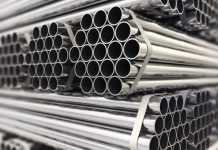Pipettes are a quintessential tool in the scientific world. These plastic or glass tubes are utilized in measuring and transferring liquids (measured to a very accurate volume). These tubes are indispensable for geneticists, chemists, microbiologists, and medical researchers. While using a high-quality pipette such as the pipette genie, it is possible to transfer liquids one at a time. However, when the experiment requires one to move thousands of samples at a go, the experience can quickly devolve into a nightmare. Tests require not only a working knowledge of safety regulations but also efficiency and accuracy of lab proceedings. Using a multichannel pipette such as the pipette genie can eliminate the hustle of having to painstakingly transfer liquids one at a time repeatedly for many rounds. Let’s focus on the factors to consider when selecting multichannel pipettes.
Understanding multichannel pipettes
To allow the scientist to aspirate multiple pipette tips simultaneously, he can use a multichannel pipette. This will dramatically increase the output capacity of the lab, as well as minimizing capital expenditure and overall time of production. Multichannel pipettes can be configured to allow 8-12 or up to 48 and 64 channels at a time to aspirate large amounts of liquids at a go.
Designers have to build multichannel pipettes efficiently for transferring large volumes at a go while maintaining high levels of efficiency in pipetting. As a regular pipette user, you should be able to obtain excellent accuracy from your selected brand of a pipette, as well as superior comfort in transferring large volumes.
Factors to consider when selecting multichannel pipettes
- Channel options
This refers to the number of channels that your pipette can be configured to work with. These can range from eight channels to 64 channels.
- Adjustable volume vs. fixed volume pipettes
Sometimes you require high accuracy levels in your pipette usage. In this case, you should go for a fixed-volume pipette. This is because adjustable volume tools tend to vary in accuracy for a given range of capacity. The highest efficiency is attained at the high-end while the worst occurs at the low volumes. Compared to adjustable volume pipettes, fixed-volume models are calibrated for incredible accuracy at the set amount.
- The types of liquids you need to transfer
This is important because user technique and accuracy play a critical role in maintaining high standards of reproducibility of the experiments. A majority of multichannel pipettes work on the principle of air displacement. You have to take the type of liquid you need into account when selecting a viable pipette model. While at it, you can also decide whether you need to filter the tip.
- Manual vs. electronic multichannel pipettes
An advantage of automated pipetting is the minimizing of repetitive strain injuries since all you have to do is push a button to complete a transfer to ninety plates, for example. However, this operation depends a lot on the sizes of the tips, and the volumes to be transferred.
Conclusion
Multichannel pipettes lessen the load when it comes to transferring large volumes of liquids across multiple plates. The electronic versions make things even more natural as well as reducing the chances of injury due to repetitive straining. Pipette genie is the right choice of an electronic multichannel pipette.







